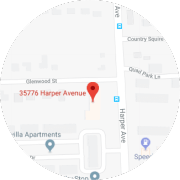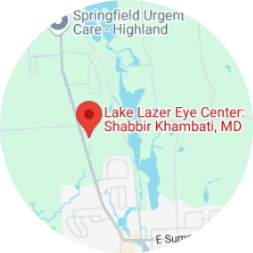
It’s a staggering figure: According to the Academy of Ophthalmology, there are nearly 25 million people in the United States with cataracts right now. In fact, about half of all adults will have cataracts by the age of 75.
June is Cataract Awareness Month, when eye professionals focus on educating patients on the risks, symptoms and treatment of cataracts, one of the leading preventable causes of blindness in adults. Learn how to tell whether that fuzzy vision is cataracts, or if your eyes are simply changing (refractive error).
Who is affected?
CATARACT:
There are few certainties in life except death, taxes … and cataracts. Both men and women fortunate enough to live a long life will develop them eventually. While infants and children can have cataracts, it is rare in young people.
Cataracts are a gradual clouding of one or both of the corneas, which are normally clear. They usually begin forming after the age of 40, but they may take decades to start affecting vision.
REFRACTIVE ERRORS:
Refractive errors are better known by their names – myopia (nearsightedness), hyperopia (farsightedness) and astigmatism. No one is immune from refractive errors, not even kids. Refractive errors are common in men and women, all races and all ages. They occur when the cornea (lens) or the eyeball itself is slightly misshapen, causing light entering the lens to bend, or refract, at the incorrect angle. This refractive error causes the light to focus on the wrong spot in relation to the retina.
What does it look like?
A CATARACT:
As with refractive errors, the most common cataract symptom is cloudy vision. However, you should screen for cataracts if some or all of these conditions also apply:
- You are over the age of 40.
- You experience reduced color perception.
- You have double vision.
- You have trouble seeing at night or see nighttime halos and “starbursts.”
- You have become more sensitive to bright light.
As a cataract progresses, the pupil may also become noticeably cloudy. If you or someone you know has cataracts that are visible to the naked eye, schedule an eye exam immediately.
A REFRACTIVE ERROR:
Blurry vision is the most common symptom of a refractive error. Depending on the type of refractive error you have, the blurriness may occur when focusing on things up close (hyperopia, or farsightedness) or at a distance (myopia, or nearsightedness), or can be generally distorted (astigmatism).
How is it treated?
CATARACT:
The only way to treat cataracts is by surgically removing the clouded lens(es) and replacing it with an artificial lens. Patients with both cataracts and a refractive error can have both issues corrected simultaneously with insertion of a prescription intraocular lens (IOL), or via LASIK following cataract surgery.
It is not necessary to wait until the condition has severely affected eyesight; cataract removal and IOL implantation can be done at any stage.
REFRACTIVE ERRORS:
Nearsightedness, farsightedness and astigmatism can usually be easily treated. There three primary methods for correcting or compensating for refractive errors:
- Eyeglasses
- Contact lenses
- Permanent vision correction – LASIK, SMILE, PRK, RLE, IOL, etc.
The best option for each patient will depend on age, the type and degree of the refractive error, overall health, budget and other factors.
Who can treat me?
A qualified ophthalmologist can help those with nearsightedness, farsightedness or astigmatism compensate for refractive errors through a vision correction procedure, like SMILE or LASIK.
An eye surgeon will have to remove cataracts and implant corrective artificial lenses. A surgeon can also permanently correct refractive errors to eliminate the need for prescription glasses and contacts.
Lake Lazer Eye Center offers up-front pricing, and convenient and affordable payment plans for SoftTouch LASIK and the SMILE procedure. Dr. Khambati has helped thousands of people from all over the world escape the restrictions of glasses and contacts. In the event that you’re not a candidate for vision correction, we’ll assist you with a contact lens evaluation or a selection of designer and specialty eyewear.

 586-792-3891
586-792-3891 



